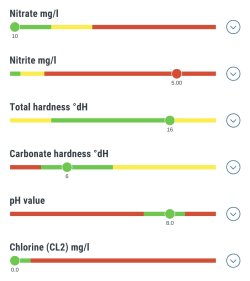Radford_96
New Member
Hi there,
I’m new to owning fish so have very little experience.
I followed the shop instructions by starting off with 6 neon tetras, then a week later added 4 more then a week after that added a 5 more fish of varying species.
I went to do my weekly 1/3 water change and found the nitrate levels to be high (see attatched photo) I then did another test 24 hours later and found the results to be slightly lower.
I’m not sure about the cycles ect but worrying about the health of the fish so feel it warranted a post for some expertise.
I did notice the quick sinking food we got for the 2 x panda Kory fish is getting caught in the biorb media and dissolving which as I understand can cause issues.
Any recommendations as to what I need to do? I used the syphon to clean the gravel as best as I could.
Thanks in advance! Let me know if I’m missing any info.
I’m new to owning fish so have very little experience.
I followed the shop instructions by starting off with 6 neon tetras, then a week later added 4 more then a week after that added a 5 more fish of varying species.
I went to do my weekly 1/3 water change and found the nitrate levels to be high (see attatched photo) I then did another test 24 hours later and found the results to be slightly lower.
I’m not sure about the cycles ect but worrying about the health of the fish so feel it warranted a post for some expertise.
I did notice the quick sinking food we got for the 2 x panda Kory fish is getting caught in the biorb media and dissolving which as I understand can cause issues.
Any recommendations as to what I need to do? I used the syphon to clean the gravel as best as I could.
Thanks in advance! Let me know if I’m missing any info.



 /www.fishforums.net/threads/rescuing-a-fish-in-cycle-gone-wild-part-i.433769/
/www.fishforums.net/threads/rescuing-a-fish-in-cycle-gone-wild-part-i.433769/